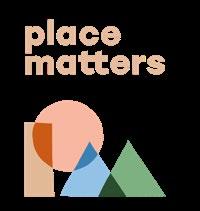

Insights from place-led funding 2:
Continuing to learn and improve our approach
X 13 I Insnsiigghthts s Reepporort t
October 2025
About the authors

Jo Blundell is Co-CEO of Place Matters. Jo started her career in the NHS and continued to work with the public sector as a consultant, a service designer and as a board level executive leading growth and development in service delivery organisations in a range of sectors. Her interest is in designing and delivering transformation through collaboration and through engagement with citizens and people with lived experience.

Lela Kogbara is a Director at Place Matters. Lela is a qualified accountant and was a senior leader in the UK public sector for 25 years, including as Assistant Chief Executive for Islington Council, a director at NHS England and advisor at Department for Education. She was one of the founding directors of Black Thrive Global. Lela is currently a member of NHS England Advancing Mental Health Equality Taskforce, a trustee of DFN Project Search and of Liliesleaf Trust UK, and is on the board of Social Finance.
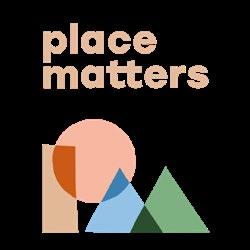
Place Matters is a partnership organisation committed to accelerating the impact of place-based change through sharing learning and practice development. www.placematters.org.uk
Introduction
From Esmée Fairbairn Foundation
In 2016, Esmée Fairbairn Foundation set out
to test large-scale, place-led funding with three ‘place pilots’. We did this by supporting three organisations delivering initiatives in Barking & Dagenham, Plymouth, and Sandwell, with the aim that the impact of the funding would be deeper and more effective than a series of one-off grants in the area.
In 2021, the learning from working in these places was captured in our ‘Insights from place-led funding’ report1 and influenced the development of our Creative, Confident, Communities strategy. Since then, contexts have shifted both locally, nationally and internationally, and we wanted to return to these three places to capture the learning and to better understand the impacts since 2021.
We commissioned Place Matters for this project, and worked with them to:
• Update and widen our learning about community-led change;
• Get a wider picture of the impact of and learning from the projects, beyond our own viewpoint as a funder; and
• Understand and share how our approach to supporting Creative, Confident Communities has evolved.
While the report focuses on learning from the three pilots, learning from the rest of our grant and social investment portfolio, as well as from our wider justice and environment work, has also contributed to our insights and evolving approach. Veda Harrison, Esmée’s Director of Creative, Confident Communities shares more about our strategy for this area and what’s next in the final section of this report.
Creative, Confident Communities:
Esmée’s strategy
Aim
We want to strengthen the bonds in communities, helping local people to build vibrant, confident places where they can fulfil their creative, human, and economic potential. Places where the local economy works better for the people who live there, where there is equality of access to arts and culture, and where communities are at the heart of change.
Funding priority
Communities working together for change
Long-term outcomes
• Local people come together to determine equitable and aspirational visions of what they want their community to be.
• Communities and their local corporate, cultural, public, voluntary and community sectors, work better together to achieve collective change.
Community driven enterprise and regeneration
• An increase in community owned assets and community wealth-building models drives greater reinvestment in local economies, reducing economic inequality.
Community-led art and creativity
• Local people and local artists lead creative and cultural activity in their communities.
• A collaborative approach to creativity and culture enables people to work together to strengthen their community.
• Local people are able to exert more influence over the decisions that affect their lives and are the drivers of change.
• Community-led enterprises are a proven and widely adopted model that underpin fairer local economies.
• Community-led approaches to the local economy positively contribute to nature and climate.
• Local and regional cultural strategies are shaped by citizens and impact wider decision making and agendas for change.
Creative, Confident Communities: Esmée’s strategy
Guidance for applications to Creative, Confident Communities
In 2024, we updated our funding guidance to reflect what we look for in all applications under our Creative, Confident Communities priorities:
• Puts the place first: by this, we mean reflects the unique character and needs of the local area and its people.
• Is community-led and collaborative: by this, we mean local people are at the heart of the change and have decisionmaking power. For us, the process is just as important as the outcomes.
• Leaves a positive legacy: by this, we mean developing long-term community capacity and resilience.
• Prioritises equity: by this, we mean the principles of fairness and equity are embedded in the approach, and the work engages and represents the diverse communities in a place.
• Creates long-term, sustainable change: by this, we mean aims to disrupt and change what does not work and to push things forward in a new way.
• Has scope to spread: by this, we mean work that can expand its influence beyond the initial impact and our funding.
We use this, alongside the specific guidance for each priority, to assess applications. See our full guidance to learn more about how to apply.
about Esmée's work and support for Creative, Confident Communities.
Scope of the research
The three places
Esmée Fairbairn Foundation was looking to fund intermediary organisations that could catalyse change in a community led by people from that community. The attributes the team looked for were organisations that enabled community engagement, supported new ideas and priorities important to the community, supported the community to organise around local priorities and provided convening spaces for local people and organisations. They were also looking for the efficiency of investing in a single local infrastructure that serves multiple projects.
The three initiatives, Every One, Every Day by Participatory City Foundation in Barking and Dagenham; POP in Plymouth; and Sandwell Council of Voluntary Organisations (SCVO), whilst very different, share the fact that they are intermediaries in some way. In each case, they played the role of enabler, capacity builder, convenor and advocate.

Barking and Dagenham
Every One, Every Day, Participatory City Foundation’s research-based, participatory model hired a new team to work directly with local people to create resident-led projects.
Working closely with the council and other funders, it opened up spaces and possibilities as well as working to transfer this model elsewhere, and continues to involve thousands of residents, as well as gathering data and build evidence on what is making a difference for the community.

Plymouth
POP’s model of a new, lean, ‘CVS (Council for Voluntary Service) for the 21st century’ enabled it to play a key connecting role in the city, growing its network to include and support hyper-local grassroots community groups.
Its open and collaborative approach to delegated funding made for a slow start, but also helped break down barriers caused by power and mistrust.
A genuine commitment to learning meant that the funding has adapted to changing needs and new ideas.

Sandwell Council of Voluntary Organisations’ core services are those of a traditional CVS, but it has approached the delegated funding programme in a participatory and innovative way.
Working extensively with local groups, they co-designed grant funding and support programmes, which build on local assets and encourage ‘happiness’ and a positive sense of wellbeing, supporting work the community wants, which Esmée is unlikely to have funded without this programme.
Sandwell
Scope of the research
POP and SCVO share more similarities with the traditional definition of a ‘Local Infrastructure Organisation’, and Participatory City was a distinct type of organisation, developed as a Research and Development initiative to develop a new infrastructure for participation, moving away from the more traditional model of volunteering as a route for people to participate in and contribute to community life.
Participatory City operated independently of existing charity or CVS infrastructure, working directly with residents to build spaces, skills, groups and projects.
Each initiative had distinct attributes and priorities, influenced by the context of the places and communities they worked.
Every One,
Every Day
by Participatory City in Barking and Dagenham
Sandwell Council of Voluntary Organisations (SCVO)
POP in Plymouth
What is a Local Infrastructure Organisation?
Local Infrastructure Organisations are often called Councils for Voluntary Services or Local Intermediary Organisations. The membership body, NAVCA (National Association for Voluntary and Community Action) describes the key functions as:
Leadership and advocacy: to mobilise the community to take action and strengthen the voice and influence of the Voluntary Community and Social Enterprise (VCSE) sector on key decision makers.
Partnerships and collaborations: to drive effective joint working by building networks of partnerships.
Capacity building: providing practical support and development for local people and organisations, nurturing skills, and building community resilience.
Volunteering:
to build an environment where volunteers and their communities thrive, by encouraging and nurturing volunteering opportunities.
Scope of the research
Methodology
The work was conducted in a series of semi-structured interviews with a cross-section of people connected to the places covered by the initiatives.
Place Matters engaged 49 people, including funders, public sector officers, staff from the initiatives, local partners, organisations the initiatives were supporting, and in the case of Participatory City: Every One, Every Day, several residents. They also included members of Esmée’s grant-making team covering different parts of their portfolio, and trustees. The interviewees were recruited in collaboration with the Esmée Fairbairn team, local teams and stakeholders to give a broad representation of the different experiences and perspectives of each of the initiatives.
What the research explored
The value and impact they delivered from different perspectives
How the projects worked and evolved over the duration of funding
How Esmée’s role as a funder was understood and experienced
Plymouth Sandwell
Key insights
The three initiatives each provide different lessons for the future design of grants that support local infrastructure. This section presents key reflections from the research team.
A strong infrastructure is essential for successful place-based change
While there are lessons from each of the initiatives about what constitutes a strong local infrastructure, there was a consistent view that local people need to be able to respond to local needs by working together. Having access to support and resources is a prerequisite for the majority of organisations interviewed. While many funders provide responsive funding to local organisations, fewer are prepared to support the infrastructure that enables them to thrive. Local authorities have been a key source of funding in the past, but as
more of them come under financial pressure, they cannot be assumed to be the sole or principal source. As more funders become interested in place-based change, there must be a recognition of the need to invest in the conditions and enablers that allow communities to act. Funders who support local infrastructure organisations provide value to others who support individual organisations, and a more collective approach across funders may be more equitable and sustainable.
Key insights
Enabling national funders to respond to local needs
Funding designed with the local sector
For funders like Esmée Fairbairn, operating with a small national team, it is not possible to fund deeply or proactively in a place without the knowledge and relationships of a local organisation that can help allocate grant funding without having a conflict of interest. Small community organisations have limited visibility of national funders’ programmes and lack the capacity to craft a funding proposal that is likely to secure funding against national competition. Funding and working in partnership with an infrastructure organisation allows national funders to take a more relational approach to local funding and help build the capacity to level the playing field for smaller organisations.
One of the key lessons from Sandwell is the positive impact of designing local funding programmes with the community, drawing on the knowledge of SCVO. The three strands of the Esmée funded programme were designed to address specific development needs of the sector in Sandwell: a culture of dependency, a lack of effective collaboration, and a need to invest in local VCSE leaders. The feedback from interviews suggested this created a critical shift in how organisations understood their role and purpose as they refocused efforts to reduce dependency and empower local people. As a condition of the EPIC programme in Sandwell, grantees were required to shift more power to local people to start and lead activities or clubs.
Infrastructure that supports all community organisations in a place
Local infrastructure organisations’ core role is to enable grassroots organisations to develop and thrive. However, as the community sector plays a more significant role in local leadership, there is a need for a coordinating capability through which all local organisations can influence and collaborate. In both Sandwell and Plymouth, local infrastructure organisations played a key role in convening grassroots organisations to work together on collective interests, in response to local priorities and in POP’s case to be proactive in shaping and informing those priorities. Whether this is an evolution of the role of existing infrastructure organisations or a space for new leadership may differ by place, but enabling the entire sector to strategically influence the future of their places seems an increasingly pressing area for development.
Creating a healthy community sector
One of the key determinants of success for local infrastructure organisations, as articulated by the membership organisation NAVCA , is for them to grow and develop grassroots organisations. However, the increasingly constrained funding environment is creating more competition, which is straining the well-being of those working in the sector and the relationships between organisations. The reflection is that there needs to be a clearer responsibility for managing the health of the sector, which includes supporting organisations to end as well as to start. While competition for funding is one way to manage the sector, feedback in the research indicated that it generally results in less funding for everyone.
Adapting to changes, including COVID
All the projects experienced external pressures, most notably the COVID-19 pandemic. SCVO and POP played a key role in enabling local charities to adapt by moving services onto digital platforms and providing new support to people experiencing social isolation. Organisations with strong community relationships collaborated with public health teams to communicate vaccine information. Many community organisations showed the value of their relationships and connections as first responders. Participation in the Every One, Every Day project was significantly impacted by the pandemic, but they mitigated the impact by investing in a virtual network that continued to provide sessions and support residents to create new initiatives. Esmée played a key role during COVID by providing additional funding, and the infrastructure organisations were wellpositioned to deploy it to grassroots organisations in their networks.
Strengthening impact and sustainability
The overwhelming majority of community organisations interviewed highly valued the support they received from Infrastructure Organisations. This support included help to develop their impact story, evaluation metrics, and improve reporting capability. This not only enabled community organisations to secure funding elsewhere but also helped strengthen accountability and performance management within teams and overall improved their resilience. Both Infrastructure organisations played a significant role in helping local organisations secure grant funding by understanding available opportunities and creating relationships with potential funders. Both POP and SCVO believes that the additional capacity they built through the Esmée grant enabled them to secure similar opportunities from other funders, bringing more investment into Sandwell.
Current measures of value and impact
A clear challenge for local infrastructure organisations is how to demonstrate the value they create in ways that create accountability and transparency for all stakeholders. The measures utilised in reporting to Esmée show a focus on delivered activities, deployed funding and membership levels reflecting what can be attributed to the work of local infrastructure organisations in supporting the grassroots sector. What this doesn’t quantify is the broader value we saw through the research, for example, the creation of networks that improved collaboration around key local priorities or the improved connection between residents and community organisations and key decision makers. These are likely to be the bigger value creators, but are difficult to capture in annual reporting cycles focused on direct impact rather than broader contribution. An evidential approach that looks for contribution to economic and social outcomes through leading indicators like quality of connection and collaboration in a system, for example.
Sustaining the focus on projects over the lifecycle of the work
The challenge highlighted by the Every One, Every Day project’s relationship with funder partners is how to sustain an appropriate level of attention to projects that are treading new ground. For experimental projects like Every One, Every Day, where there is significant risk and learning, funders did not give sufficient consideration to how they would stay sufficiently close to the work to take ownership and share responsibility. As a collaboration of funders, there was no single point of accountability, and the structures for managing the collaboration were not sufficiently developed or maintained to be effective over the duration of the work.
The initiatives
Sandwell:
Sandwell Council of Voluntary Organisations (SCVO)
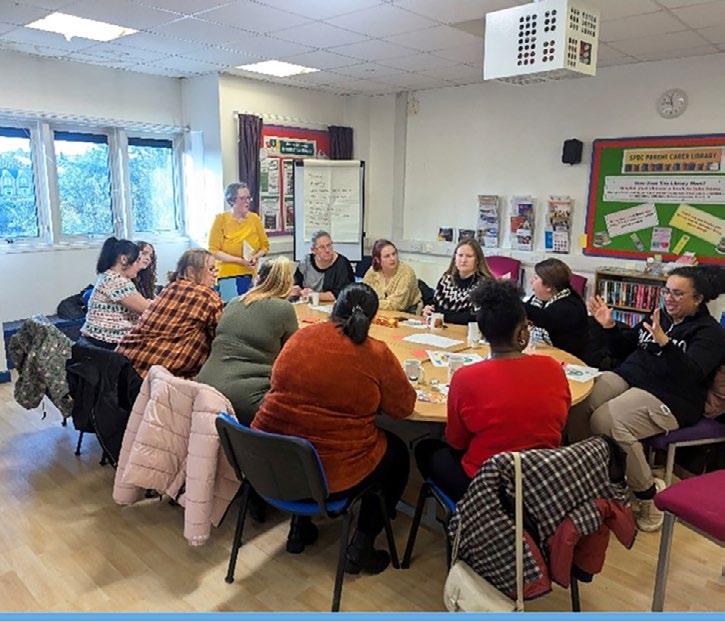
Sandwell Council of Voluntary Organisations (SCVO) carried out the role of a traditional Council for Community and Voluntary Services, but with an innovative, participatory approach to the development of an Esmée grant funding programme.
Grant and support programmes focused on building local assets, encouraging community organisations to empower local residents and to collaborate to build a stronger and more resilient community and voluntary sector (VCSE). While its work is centred on developing and advocating for the community and voluntary sector, it also contributes to developing local strategy, principally with the local council.
Key data
• Sandwell has a VCSE sector of around 1,000 organisations
• In 2024, SCVO helped members secure £2.6m in grant funding and distributed 200 grants worth £1.1m through 11 grant programmes
Sandwell:
Sandwell Council of Voluntary Organisations (SCVO)
Context
Local people view Sandwell as an administrative area rather than a single community. It is made up of six towns, each with a distinct identity. It has one of the highest proportions of ethnic minority residents in the West Midlands region, with large Indian, Pakistani and Bangladeshi communities.
The area has experienced significant demographic changes over recent decades, with growing diversity reflected in each successive census. The VCSE sector has developed to reflect this diversity, with many small organisations serving sections of the population with some thought to have developed a culture of dependency in parts of the community.
Funding from Esmée
SCVO received £1.4m over 5 years, plus £18k in development funding to support the co-design of the programme with the community and Esmée. Around £1m of the funding awarded flowed to local charities in Sandwell via three grant programmes:
• EPIC – Empowering People in Local Communities
• BOUNCE – Building Ownership, Unlocking Networks, Creating Empowerment
• Inspire – developing the capacity of local leaders.
Status
Funding from Esmée ran from 2017 and finished substantively in December 2024.
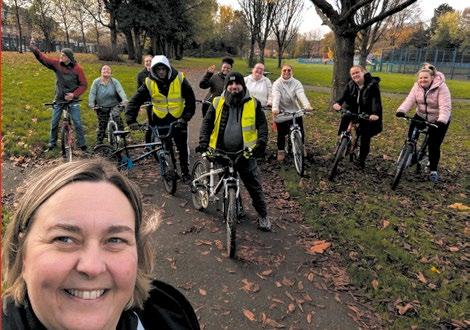
The initiatives
Sandwell: Sandwell Council of Voluntary Organisations (SCVO)
What we learned
Fair and informed resource allocation:
There has been much discussion and experimentation in recent years around methods of allocating grants, particularly around participatory methods that shift power closer to communities. What we saw in Sandwell was a largely traditional approach to grant-making where SCVO utilised its knowledge of and relationships with local organisations to inform grant allocation, providing additional support to address development needs where needed. It was widely viewed that this relational approach led to resources being allocated fairly to organisations able to utilise the funding effectively.
Progressive funding:
Many of the community organisations we interviewed told us that the majority of other funding they receive supports specific activities, is short-term and very little creates the incentives, time or freedom for organisations to invest in developing their approach or developing partnerships with others. They welcomed the opportunity the funding Esmée provided to create new opportunities to innovate, evolve, and connect with other organisations.
However, to leverage this opportunity, interviewees depended on the support from SCVO to develop the necessary skills, mindsets, and networks.
Building a more compelling narrative around impact and value:
It came at a really, really opportune time for us, because we were
in that situation that a lot of organisations are in where you’ve got funding for very specific items that’s quite tightly ring fenced, and
sometimes you’ve got other things you want
to
explore...
What
Several community organisations talked about the importance of the grant programmes funded by Esmée helping them develop a better narrative around the value they were delivering. In particular, the EPIC programme prompted organisations to think about their relationship and role in empowering local people to take action, rather than delivering directly in response to need. One CEO talked about how this reframing of their role had led them to rethink how they define and articulate their value both at an organisational level and how team members considered their role and how they were accountable for their own impact.
BOUNCE
gave us was the opportunity to do some exploratory stuff, to be quite entrepreneurial with our work and to step into areas we otherwise wouldn’t have been able to step into.
Comments from CEO of the community organisation in Sandwell about Esmée grant funding
The initiatives
Sandwell:
Sandwell Council of Voluntary Organisations (SCVO)
Securing additional funding:
Several interviewees told us that, through developing new skills and articulating their value more clearly with SCVO’s support, they had attracted additional funding. This included SCVO itself, whose experience in co-designing and deploying the Esmée grant programme had enabled it to secure similar opportunities from other funders, bringing more overall investment into Sandwell.
Bridging grassroots and decision-makers:
Interviewees talked about how they organised collectively as a sector to advocate for their communities. SCVO have developed thematic networks around key local priorities that provide a conduit between local organisations and public sector decision-makers, creating a means of dialogue and information exchange to the benefit of a better collective understanding across sectors of local needs and priorities.
Diversity versus fragmentation:
The community sector in Sandwell has evolved to reflect the diversity of the community, and a key strength of that diversity is the deep understanding and relationship with local people and their ability to deploy resources to meet local needs and preferences. Several interviewees shared examples where that relationship with local people and flexibility to act according to their needs had resulted in a crisis being avoided or local people reducing dependency on public services through the support provided to them. They particularly valued funding that fosters trust and freedom of action for community organisations, especially in contexts where communities have a mistrust of mainstream services and systems.
We also heard that there is a downside to that diversity, particularly where a scarcity of funding leads to competition for resources and where access to local assets such as community centres becomes overly restricted to specific groups in the community. The grant programme designed with SCVO and the local community sector in Sandwell was designed to act as a counterbalance by encouraging collaboration, with SCVO creating the opportunities for building connection.
Accessing sources of funding:
The overwhelming majority of community organisations interviewed relied on a network of mainly local and regional funders who provided funding year on year, albeit in short-term grants or contracts, for a broadly similar range of activities. This included the local Council, which some interviewees felt was not sufficiently active in changing their funding allocations to meet changing needs or in response to the relative effectiveness of funded organisations in deploying grants.
We understand that the Council are conducting a review of its support to and relationships with community organisations. We found that many of the grassroots VCSE sector we interviewed do not have the capacity or knowledge to access larger and more strategic pots of funding that have the potential to enable them to become more impactful and resilient. As more national funders adopt a placebased approach, allocating funding to multiple organisations in a place to drive collective change, infrastructure organisations like SCVO play a crucial role in acting as a conduit. They are able to deploy funding fairly and equitably, while also building the capacity of the local sector.
Plymouth: POP
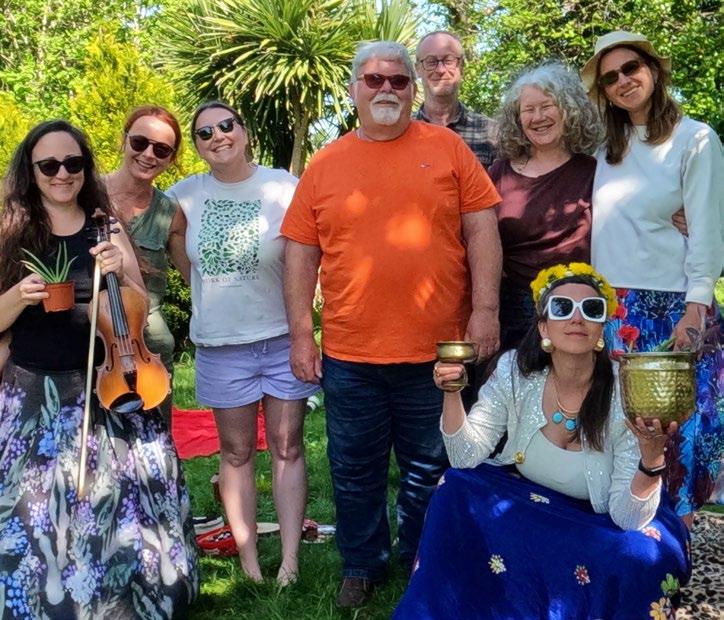
POP set out to develop a model for “a 21st Century Council for Voluntary Service (CVS)” by experimenting with democratic and participatory ways of working and building the influence of grassroots organisations. Over time, this question has evolved to explore “what civic infrastructure is needed to create a just and regenerative transition”.
Key Data
• POP’s networks have grown to over 880 members, from a starting point of 122 in 2017.
• Over the last 10 years, they have supported grassroots organisations to win nearly £10m of funding from over 60 funders
• In the last five years, they have distributed nearly £900,000 to organisations
Plymouth: POP
Context
Plymouth is a place with a thriving VCSE sector, including other local organisations such as Nudge, Real Ideas Organisation and the Plymouth Food Network. Both the local authority and NHS actively engage with and support the VCSE sector. Plymouth refers to itself as a Social Enterprise City. It is also a place with very significant pockets of deprivation. Based on 2019 data, almost 18% of Plymouth’s population, over 46,000 individuals, live in the 10% most deprived wards in England. This includes over 3,600 individuals who live in the 1% most deprived wards in England.
A key priority for local leaders is tackling the significant level of democratic disengagement and finding ways for the community to participate in local decision-making and place shaping.
Funding from Esmée
POP received £2.2m over 10 years. Around half of the funding was distributed to grassroots community organisations through a participatory grantmaking programme where local organisations shared responsibility for grant allocation decisions. Grants were deployed through different funding programmes, for example:
• POP Collectives encourages collaboration across grantees with £5,000 grants
• £250 a POP provides micro grants.
Esmée also made a £100,000 development grant to POP and other partners to further develop ways to shift power and how decisions are made in Plymouth by exploring potential synergies and system transformation. This has developed into a close relationship with Nudge Community Builders to develop a Stonehouse Demonstrator.
Status
Esmée started funding POP in 2017 and continues to fund the initiative.
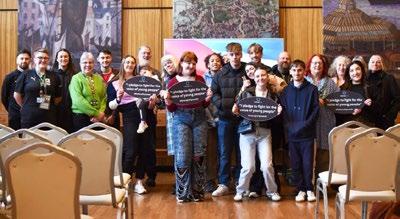
The initiatives
Plymouth: POP
What we learned
Fair and informed resource allocation:
One of the key objectives of the grant was to develop and test a range of participatory processes that test different forms of decision-making, including where members vote on grant allocations. Testing models of participation was one of the aims of the Esmée grant. The principle of participatory grant making was widely viewed by interviewees as a more open and democratic process, but with some differences in experience, particularly around the efficiency of the application process relative to the grant amounts available.
Levelling the playing field:
Interviewees discussed the role of infrastructure organisations, such as POP, in “levelling the playing field” for smaller charities, thereby increasing funders’ confidence in deploying funding to them. POP deployed 87% of its grant funding from Esmée Fairbairn to organisations with a turnover below £100,000, who would otherwise be less likely to secure funding from national funders.
Adapting to change:
During the COVID-19 pandemic, POP played a key role in helping local charities adapt by moving services online and providing new support to people experiencing social isolation. Esmée also provided additional funding during this time, which the infrastructure organisations were able to deploy to grassroots organisations.
Bridging grassroots and decision-makers:
This was a critical role of the local infrastructure organisations in both Plymouth and Sandwell. In interviewing local public sector leaders, it was evident that there was a good level of alignment in the values and mindsets that underpins the working relationship between the local authority, Integrated Care Board (ICB) and VCSE. In terms of the value that quality of relationship created, local leaders talked about POP enabling a better dialogue with residents and enabling access to parts of the community that were more difficult for commissioners to reach and engage with.
I think that’s what they [POP] do well, is hold that space for those organisations and always act as a bit of a bridge between and not a gatekeeper, but a bridge. And I think that’s the difference, between those smaller organisations and the larger, kind of bigger VCSE or anchor institutions within the City.
Public Sector Leader in Plymouth
The initiatives
Plymouth: POP
Straddling strategic and grassroots work:
Whilst the level of strategic influence is a strength of POP’s approach, some of those we interviewed felt that the way in which POP articulates and frames its contributions to local strategic work did not communicate the value and impact of the grassroots sector in a sufficiently clear and compelling way. The questions it raises is how to balance advocacy – giving voice to the work of the grassroots sector – with the role of a strategic leader, contributing to the wider thinking about shaping and developing their communities. It is a broad remit in the context of small teams and one of the challenges in balancing the skillsets and focus of local infrastructure teams like POP.
Representation of the VCSE sector:
Plymouth has a vibrant community sector supported by local leaders who value the role of the sector. This has enabled some significant and successful community organisations to thrive, notably the Real Ideas Organisation, Plymouth Food Network, Nudge and the Social Enterprise Network. It is a place where community organisations have been able to scale and develop. What emerged through the interviews is a tension around leadership and advocacy of the VCSE sector as a whole and questions about where the mandate to speak for the whole sector resides.
Sustaining Infrastructure Funding:
Even in Plymouth with a local authority that values the role that POP plays, continuity and sustainability of core funding remains a key issue. A public sector leader in Plymouth highlighted the importance of “core funding that comes from organisations like Esmée” because it provides a “secure and independent platform” for development, contrasting it with the “hand-to-mouth” nature of project-based funding.

Barking and Dagenham:
Participatory City: Every One, Every Day
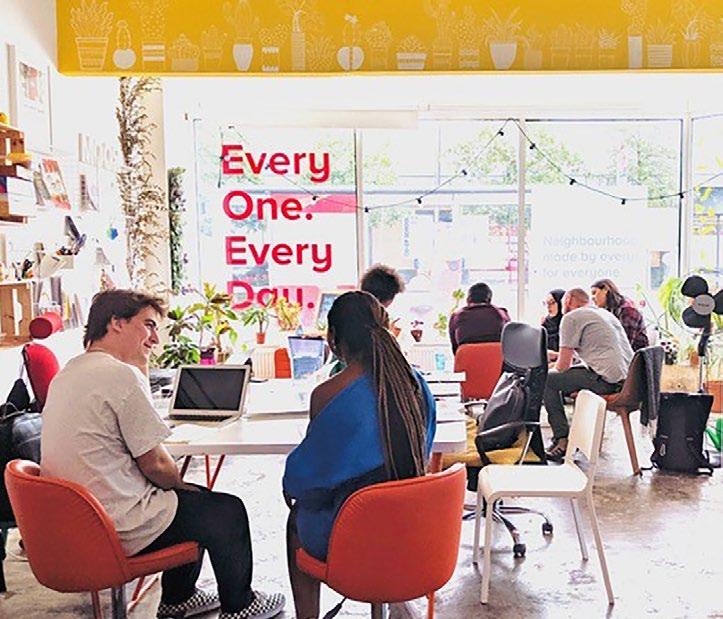
Participatory City: Every One, Every Day functioned as a “Social Research & Development (R&D) project” to test new models of participation through community engagement and support. It aimed to reinvigorate social connections in a diverse, expanding community by developing the organising platform and spaces to give residents the facilities and agency to meet, share skills, develop projects, and build relationships.
This was delivered through 100 different places across the London Borough of Barking and Dagenham, providing physical infrastructure, new community facilities and engagement points.
Key data
• Over its seven-year duration, they had over 28,000 participants: 89% of participants were local residents; 37% were new participants, and 63% were returning participants
• Based on qualitative surveys of around 300 residents over four different study periods, residents reported the major benefits being around enjoyment and happiness, friendship and a sense of community.
• Every One, Every Day had 202 organisational members, with 51 using at least one of the facilities.
The initiatives
Barking and Dagenham:
Participatory City: Every One, Every Day
Context
This fastest-growing London Borough has experienced one of the most dramatic demographic changes in the UK over recent decades. In the 2001 Census, the Borough was around 80% White British, but by 2021, this had reduced to approximately 31%. This represents one of the fastest changes in ethnic composition of any local authority in the UK.
The Borough is also undergoing significant gentrification as a result of the regeneration of Barking Riverside, in part to respond to the very low levels of Council Tax receipts affecting the sustainability of Council services. Weaker public transport infrastructure connecting the borough to other parts of London and the several major roads (including A13 and North Circular) that bisect the Borough limit the mobility of people across the Borough and their ability to connect.
In 2020 Chris Naylor became the CEO of the Council and instigated a major programme of social and economic renewal that included the Every One, Every Day Participatory City project.
Total funding
Every One, Every Day received £7.5m over eight years across a collaboration of funders including: London Borough of Barking and Dagenham, City Bridge Trust, National Lottery Community Fund, Esmée Fairbairn, Bloomberg Philanthropies and London Mayor’s Good Growth. Esmée contributed £2.2m.
Status
Every One, Every Day started in 2017 and finished in 2023. Delivery sites across the Borough, including the largest of these, the Warehouse, closed, and equipment was distributed to residents and community organisations through a legacy plan.
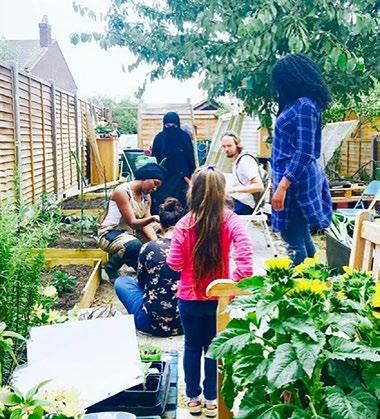
The initiatives
Barking and Dagenham:
Participatory City: Every One, Every Day
What we learned
Creating aspiration and hope:
The overwhelming sense from the residents we interviewed who had participated in Every One, Every Day is that it was a transformational opportunity that they were amazed had come into a Borough that had few community assets. Residents reflected that the investment in the quality and quantity of resources made them feel cared for and was a vote of confidence in their community. It had a clear impact on the quality of relationships
between local people, and this is backed by the data collected by the initiative, which demonstrated an improvement in trust between local people and an appreciation of the skills and talents in the community.
Providing new community amenities:
The initiative significantly expanded the number and reach of community spaces, creating around 100 spaces across different parts of the Borough, which, in the context of a place that has lacked community amenities, was a significant source of value to other community groups. Community organisations we interviewed talked about the value of accessing these facilities and, as the project and the facilities closed subsequently, how that had negatively impacted their ability to sustain the same level of provision.
Disrupting the status quo:
The initiative was perceived as being a ‘disruptor’ to the existing model of voluntary and community infrastructure, which at the time had poor relationships with local public sector leaders. Its model of direct empowerment of residents was a radical shift away from using the existing local community infrastructure as a conduit to empowering local people. Several interviewees were of the view that it indirectly paved the way for new organisations to emerge, like BD Collective, which created a new platform for community and voluntary sector organisations to convene and act collectively, and Barking & Dagenham Giving, which has attracted significant investment into the Borough.
I’ve been blown away by the talent and the humanity of people in the area. You’d never believe this was happening in Barking and Dagenham.
Barking and Dagenham Resident
The initiatives
Barking and Dagenham:
Participatory City: Every One, Every Day
Challenges with sustaining legacy:
The key ambition for the initiative was improving social cohesion and we met with residents who had remained friends through connections made. But, without the spaces or activities, they were not able to build new connections or share their skills and interests to sustain the improvements in relationships.
The model depended on a combination of spaces for connection and participation, and the support of the “organising platform” which supported residents to create new initiatives. As the project came to an end, the equipment that had been invested in was distributed to residents and community groups through a legacy plan. However, many of those we interviewed felt that there had not been a significant enough legacy to reflect the level of investment made and more could have been done – including by funders and commissioners – to sustain a clearer legacy.
We heard some examples where initiatives started with the support of the programme, notably a children’s book series and community café, but without the support of the Every One, Every Day team, those we interviewed felt that most initiatives did not sustain.
"There's no legacy, there's nothing for new people that move in, they're not even going to know that anything amazing was there."
Barking and Dagenham Resident
However, there is a legacy outside Barking and Dagenham. There is a free, openaccess online course developed by Tessy Briton, the Founder of Participatory City, to enable others to learn from and apply the model. We also understand that the Participatory City model is being implemented in Kirkcaldy Scotland, through Corra Foundation, building on the learning from Barking and Dagenham.
One of the biggest lessons from Barking and Dagenham is the challenge of exiting an initiative in a way that is sensitive to its context. Participatory City depended on a significant investment into space, people, and equipment, working outside the existing community sector. A legacy plan was developed as part of the work, which included distributing resources to existing people and organisations. The view of many of those we interviewed is that in the context of the significant investment made, the legacy has been limited and there was a missed opportunity to sustain more of the value created by the work by retaining some facilities and enabling the many relationships and connections created to sustain and mature through alternative investments.
The initiatives
Barking and Dagenham:
Participatory City: Every One, Every Day
Adapting during external pressures:
Whilst the COVID pandemic was an exceptional event, it surfaced a fundamental tension between testing what was described as a “high fidelity” model that needed to adhere to the essentials of the model to meet the research requirements and being part of a local community infrastructure that acts with flexibility and collectively to meet local need. Whilst the Every One, Every Day team talked about adapting the way they created participation for residents during the pandemic, they were constrained in adapting the programme more fundamentally or reallocating resources to other purposes.
The pandemic threw a sharper light on the wider value of a cohesive, trusted and deeply connected community sector. It highlighted both the value of building a cohesive VCSE sector, with the relationships and co-ordinating capacity to work together and the importance of being able to utilise local resources flexibly. In our view the lesson for future funding of major innovations is that they need to show how they will adapt to local context and become part of local infrastructure.
Partnerships with funders and decision-makers:
Strong backing from local leadership and funder partners existed at the outset, but declined over time as people moved on and priorities changed. The funder partners we interviewed acknowledged that those who were initially involved were more inclined to value the learning from the experimental and innovative nature of the work. Some of those involved more latterly were not as closely involved and the mechanisms for collective ownership of the work across funders weakened over time with relationships between funders and the programme team becoming more bilateral.
Measuring the value of the work:
The initiative used a mix of indicators to report on its impact, for example, levels of participation per area, the demographic background of participants and qualitative survey data capturing the experience of participants, including data on how they felt about their fellow participants. Other factors impeded the team’s ability to provide conclusive evidence of its impact on social cohesion, notably the fact that it closed earlier than planned, the pandemic having a significant impact on levels of participation and having no external evaluation of the project. Several interviewees noted that the initiative would have benefited from having a clearer approach around how it measured impact and would have valued more quantifiable evidence around how the work had impacted on social cohesion at a population-level.
Creative, Confident Communities: recommendations for what next
Esmée’s strategy is founded on empowering communities to decide how to use resources to strengthen their places, which is highly aligned with the three initiatives. To deepen the strategy’s impact, five areas for consideration have been identified.
2
Build better collective impact
Challenges like poor health and low educational attainment are complex, systemic issues that require a multiagency response. LIOs are important for bringing smaller organisations to the table to influence priorities and design systemic change.
1
Invest in local infrastructure
The research shows the critical role of Local Infrastructure Organisations (LIOs) in harnessing the strength and talent of the community sector. They enable smaller, local organisations to connect deeply with the community and build trust. Esmée could support the development of a value framework to help make the case for LIOs to other funders, which is essential as local council funding becomes more constrained.
3
Scale
through funder collaboration
Effective funder collaboration is still developing. This involves aligning strategies, holding collective responsibility, and using collective intelligence to make informed decisions. Deeper work with communities requires longer-term funding and support from funders with different capabilities.
4
Strengthen the relationship to the work
Place-based work is difficult to understand from a distance. Funders need to stay close to the work to understand the context, quantify impact, and make timely interventions. The codesign work in Sandwell demonstrates how LIOs can help funders design bespoke grant programmes that are important to the community.
5
Plan for sustainability
The experience in Barking & Dagenham highlights the challenge of exiting a project sensitively. A legacy plan was developed, but the view of many interviewees was that the legacy was limited. There was an opportunity to sustain more of the value created by retaining some facilities and allowing relationships to mature through alternative investments.
Reflections from Esmée

Veda Harrison Director of Creative, Confident Communities
Since our first Insights report on place-led funding in 2021, we have continued to learn from the organisations we support, our peers and wider stakeholder networks. The Place Matters’ research highlights similar themes and has helped to inform our thinking and funding practice. This learning also shaped our current and evolving approach to the Creative, Confident Communities strategy.
Supporting local infrastructure and building existing assets
Place Matters’ research identifies this as a critical and enabling aspect of place-based funding and we’ve seen the importance of resourcing this ‘connective tissue’ and the role it plays in connecting sometimes disparate and competing priorities in a local community.
• POP continues to play an important role in both connecting small grassroots organisations so that they can be collectively effective and connected to other stakeholders such as Plymouth City Council for city-wide change.
• Another example is Our Future, a movement for community-led change for Grimsby and other areas defined as ‘left behind’. Their work in Grimsby includes building on existing assets to harness the local economy through community plans, community-led housing and green economy opportunities.
The importance of home grown
As the report shows, it’s important to ensure that partnerships and plans either come from or are developed with the community. Barking and Dagenham shows this is especially the case in building resilience that comes with ownership in difficult times.
• We have drawn on this learning in our approach to LocalMotion. The six local plans, led by local coordinators, continue to focus on strengthening and connecting the civil society sector in the six places and ensuring those at the margins of the communities are involved in the design and delivery of the planned work.
Reflections from Esmée
Amplifying best practice and sharing evidence
Esmée cannot fund every community and place in the UK, but we can work with others to develop, spread and share learning and best practice collectively across many more places than by working on our own. This includes resourcing local leadership development to sustain change beyond the initial funding.
• We are funding Place Matters on a project to support greater collaboration between funders and increase the reach and impact of place-based funding approaches. As part of this work, they have developed an interactive map, capturing place-based projects that are tackling systemic challenges in collaboration with their communities and local stakeholders, with the aim of enabling connection and collaboration across funders and community organisations.
• We also plan to convene more of our grantees across our Creative, Confident Communities portfolio to help build supportive networks.
The role of local government
Local government and new devolved structures are an increasingly important factor in place-based work – in terms of the context that organisations and communities are operating in. We will continue to take account of the challenges and opportunities the changing policy landscape presents for our work.
• Local authorities participate in the Local Coordination Group meetings across the six LocalMotion places.
• Trading for Good, a place-based programme by School for Social Entrepreneurs, New Local, and Voice 4 Change England. They will work proactively with local authorities and services to catalyse long-term change in three places by building inclusive, community-led economies.
Esmée cannot fund every community and place in the UK, but we can work with others to develop, spread and share learning and best practice collectively across many more places than by working on our own.
Reflections from Esmée
Providing social investment
Social investment has long been another tool we use to support organisations to create impact. Our expertise, alongside learning from our place-based work, and the relationships we have developed with organisations including Power to Change, Plunkett, Social Enterprise UK, Access – the Foundation for Social Investment, and Co-operatives UK, have been integral to the development of our Partner in Place social investment strategy.
• We developed Partner in Place to offer social investment that is place-led and takes a partnership approach. A prime example is Kindred in Liverpool City region, where we are provided lending to them in order to leverage £2.45m from the combined authority to be made available to socially trading organisations (businesses that deliver social benefits and trade commercially).
• We have ringfenced £2m over 10 years for social investment in the six LocalMotion places in addition to providing £3m in grant funding. The grant funding provides the budget to catalyse long-term community-led change, and the social investment funding works to get the long-term community physical infrastructure in place to support and sustain that community-led change. We have also commissioned a consultant to work closely with the six places to help them to become investment ready.
• We are supporting the expansion of the Barking & Dagenham Giving GROW Fund to ensure community-led social investment readiness is available across the borough.
Staying close and long-term
Learning from other funders such as Rank Foundation and the Tamarack Institute in Canada show that this is long-term, patient work, with no cookie cutter solutions. Working with partners with knowledge and expertise in places is vital to address economic, social and environmental issues in practical ways at a community scale. Place Matters’ research also shows how important it is for funders to stay close to the work if we are to understand and learn from it. As well as regular grantee visits, specific examples include:
• LocalMotion – across all the funder partners, we attend steering group meetings, place visits and local coordination meetings (in person and online)
• We are part of the Regenerative Futures Fund, a 10-year programme in Edinburgh on the root causes of poverty and racism in a just and environmentally sustainable way, and attend their oversight and enabling board (in person and online).
Read our blog with more reflections from Esmée and the three initiatives, alongside a map of Esmée's funding in Creative, Confident Communities.
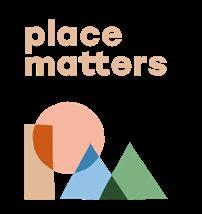
Authors
Jo Blundell Co-CEO, Place Matters
Lela Kogbara Director, Place Matters www.placematters.org.uk Further
210 Pentonville Rd
London N1 9JY
T 020 7812 3700
communications@esmeefairbairn.org.uk www.esmeefairbairn.org.uk
Esmee Fairbairn Foundation
Registered charity 200051
